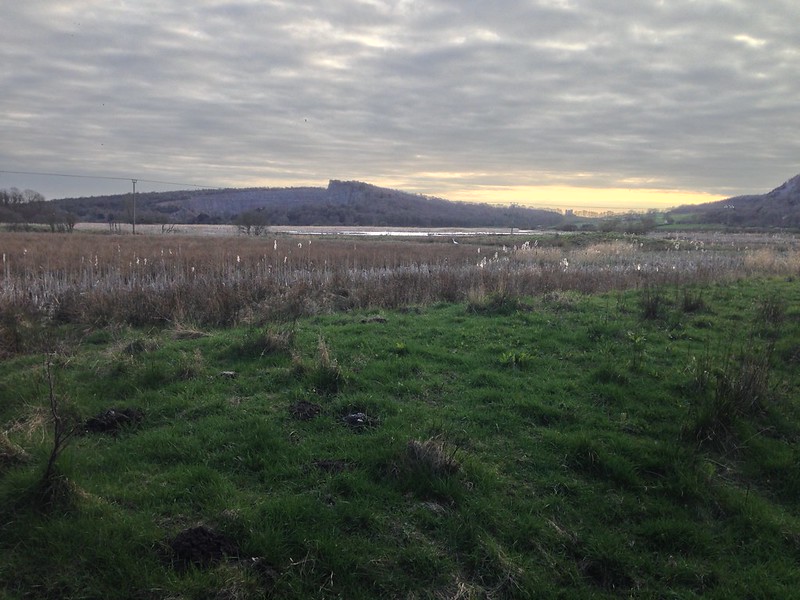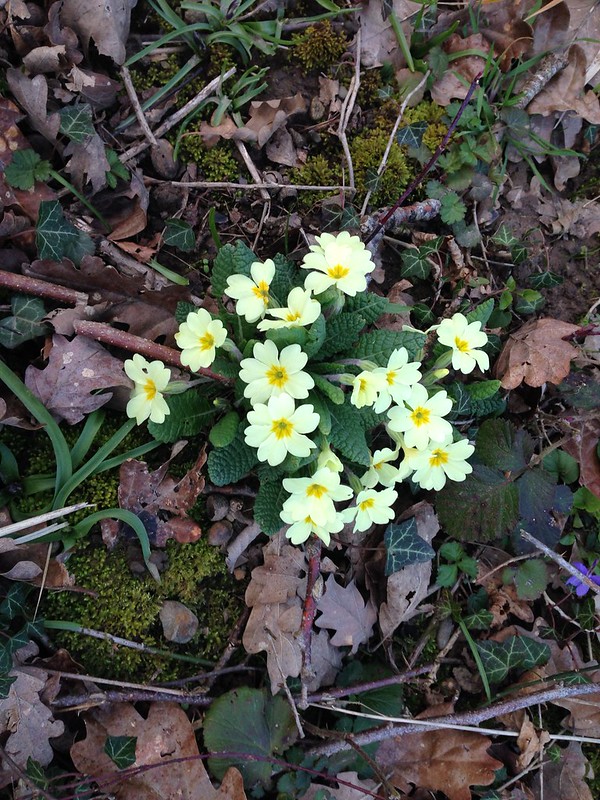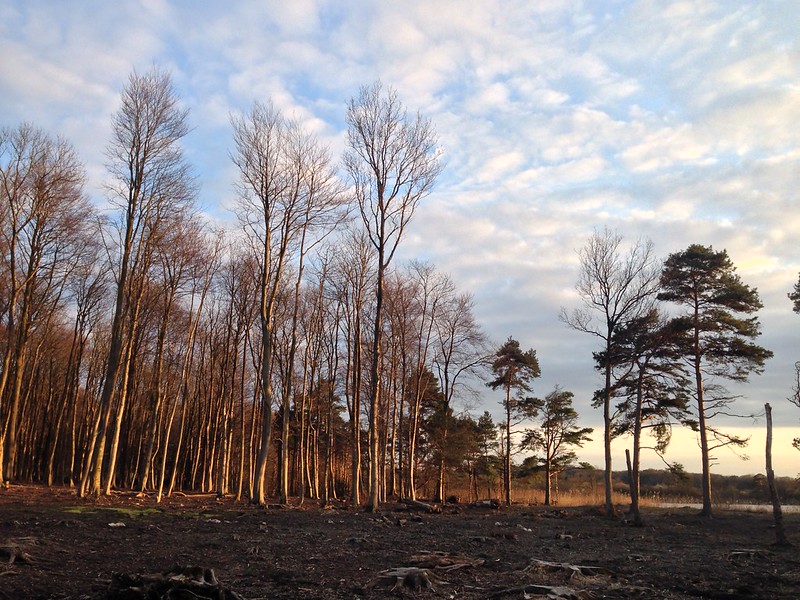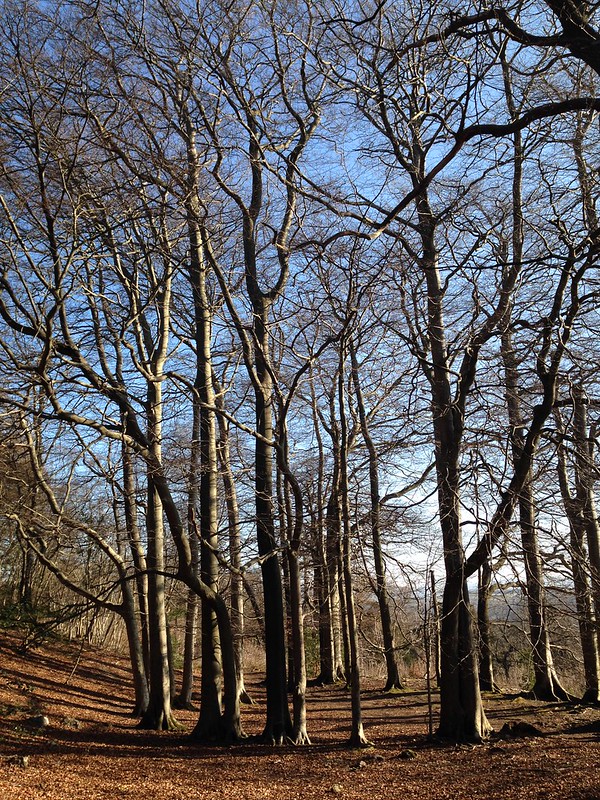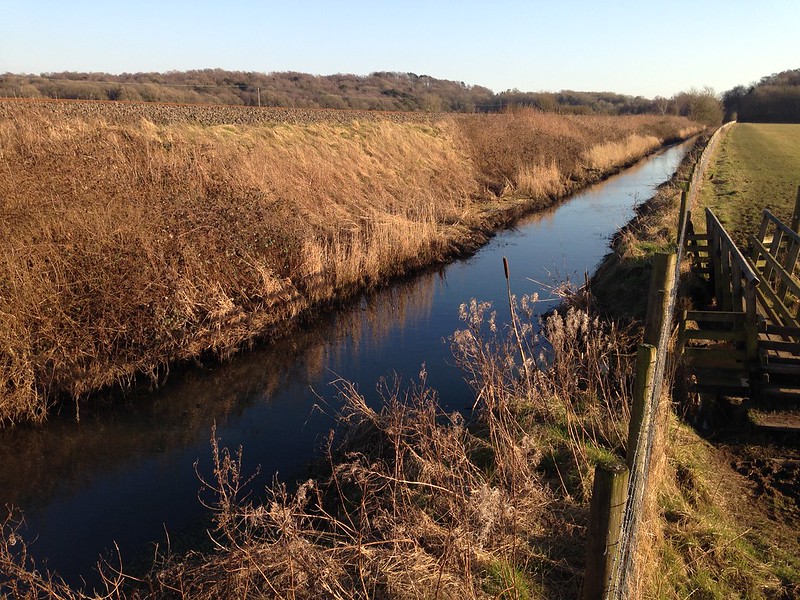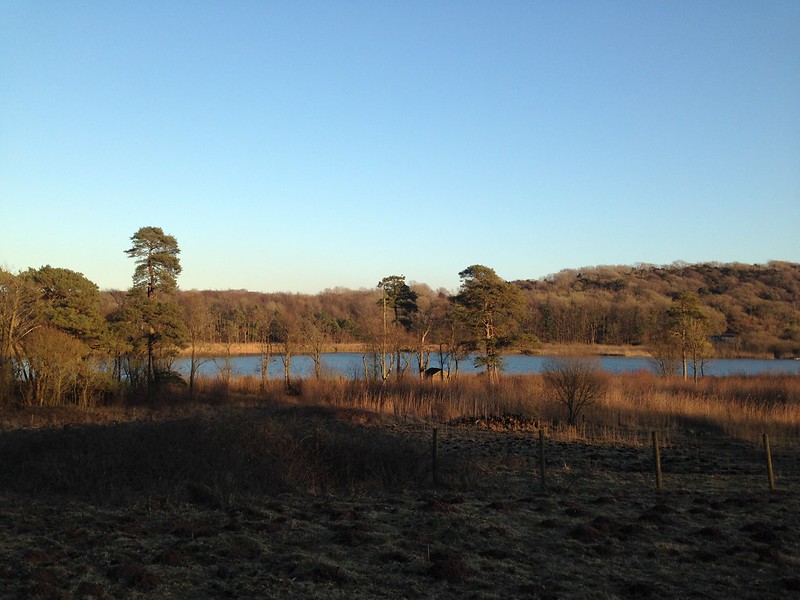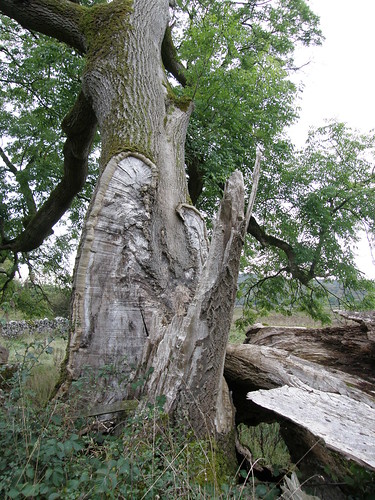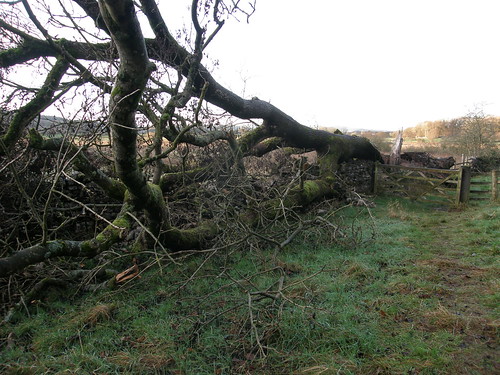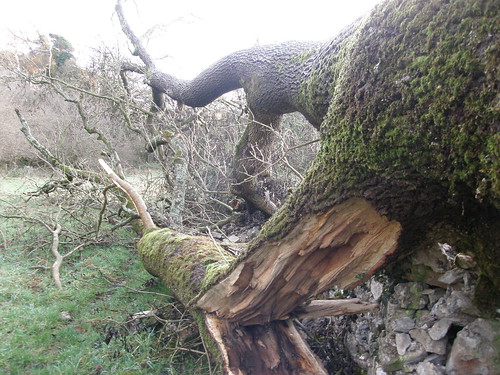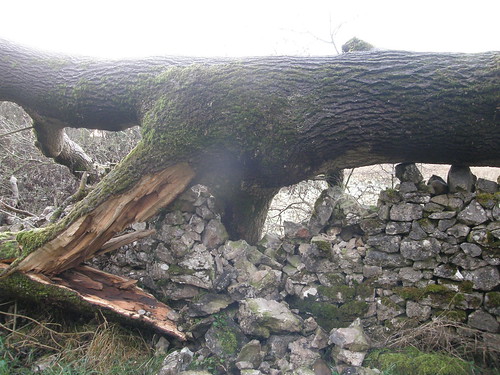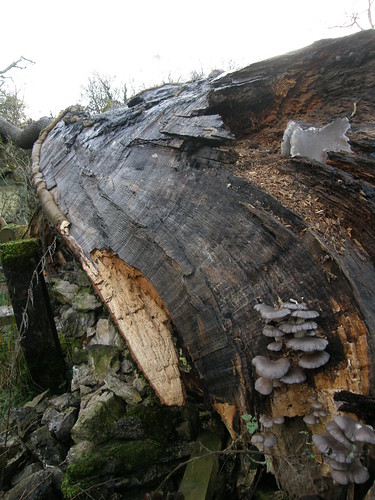Eaves Wood – Hawes Water – Gait Barrows – Coldwell Meadows – Coldwell Limeworks – Silverdale Moss – Hawes Water – Eaves Wood
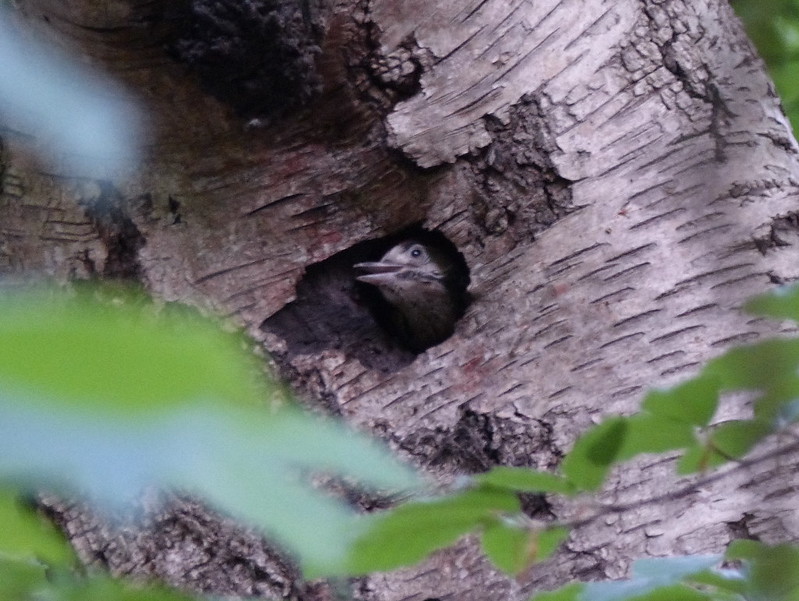
By rights, this post should have been an account of a walk from the Leck Fell Road taking in Coum Hill and Gragareth via Ease Gill. I had it all planned: I drove as far as Cowan Bridge, but the car was playing up, unexpectedly losing power without warning or any apparent reason; so, reluctantly, I drove home – with some difficulty – left the car outside the local garage, and walked home through the village. Later, I decided to cut my losses by heading out for a local wander.
The previous week, when I’d been in Eaves Wood looking for Cuddlytoy-Makeshift -Orienteering-Controls, I was distracted by a proper hullabaloo issuing from a Birch tree which was listing from the perpendicular. I recognised the commotion as the distinctive uproar of a Woodpecker nest, with what sounded like several chicks demanding food. I scanned the tree and soon found the hole in the trunk which housed the nest. I watched for a while, but whilst both parent birds approached, they became agitated and wouldn’t visit the nest under the glare of my attention, so I left them to it. Now I was back. I could only hear one young bird this time, but it was making-up for having to perform solo by protesting its extreme hunger with remarkable vigour.
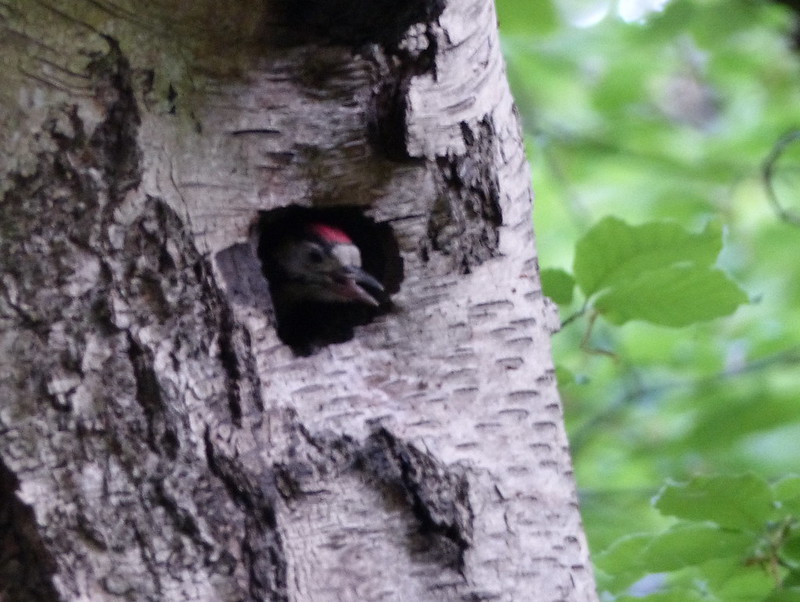
I assumed that the other chicks had fledged and that this one would be on the point of leaving too, but I was back there a few days later, with some old friends, and the single chick was still there, and still every bit as volubly voracious. We watched it poking its head through that porthole and clammering for sustenance. This morning, however, I was back again and all was finally quiet.
Anyway, I’m getting ahead of myself.
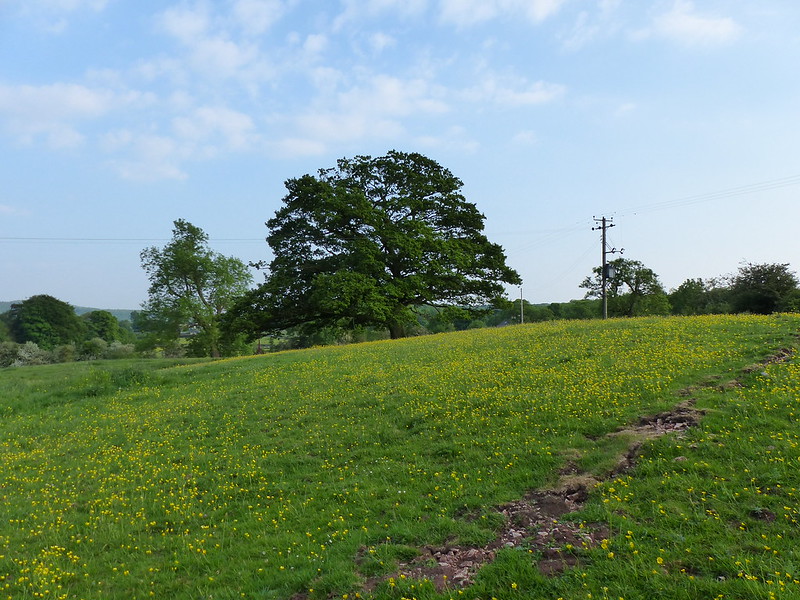
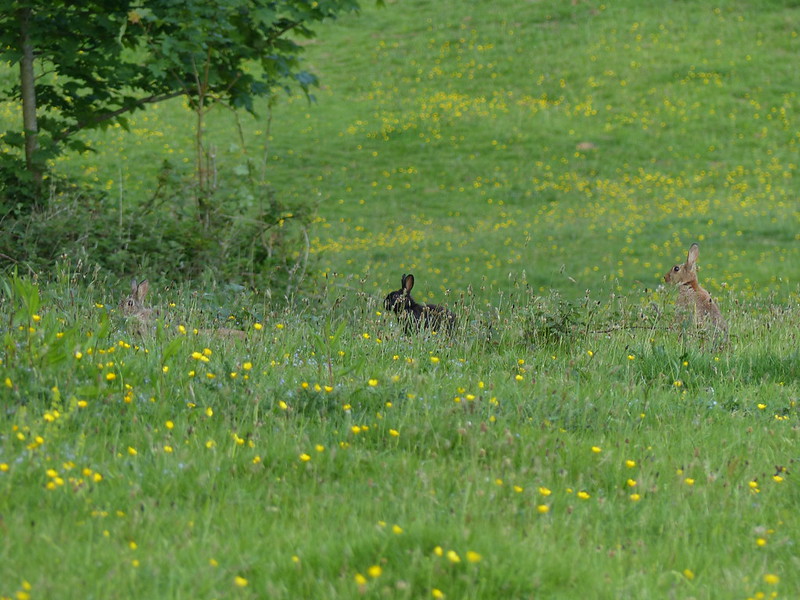
Amongst the Buttercups near Hawes Water there were many Rabbits, a couple of them black. Escaped pets or the descendants of escapees?



Blue-tailed Damselflies.
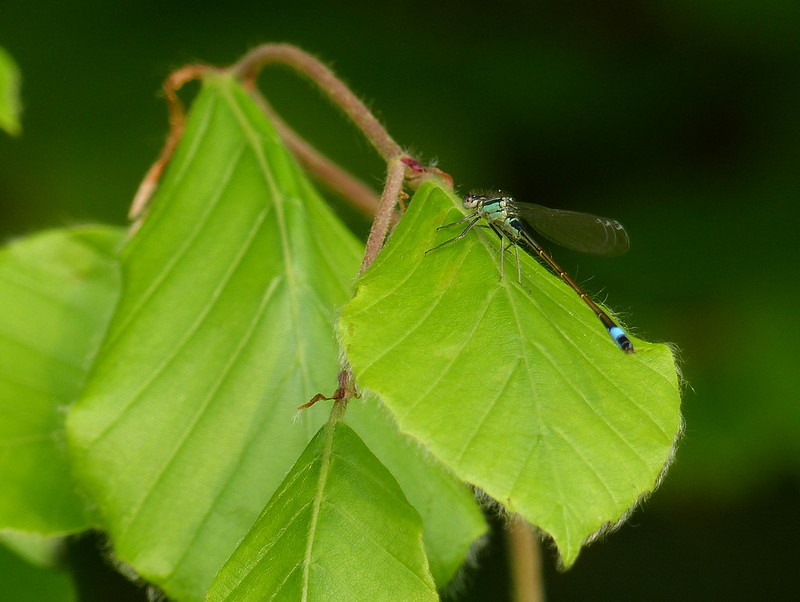
This…
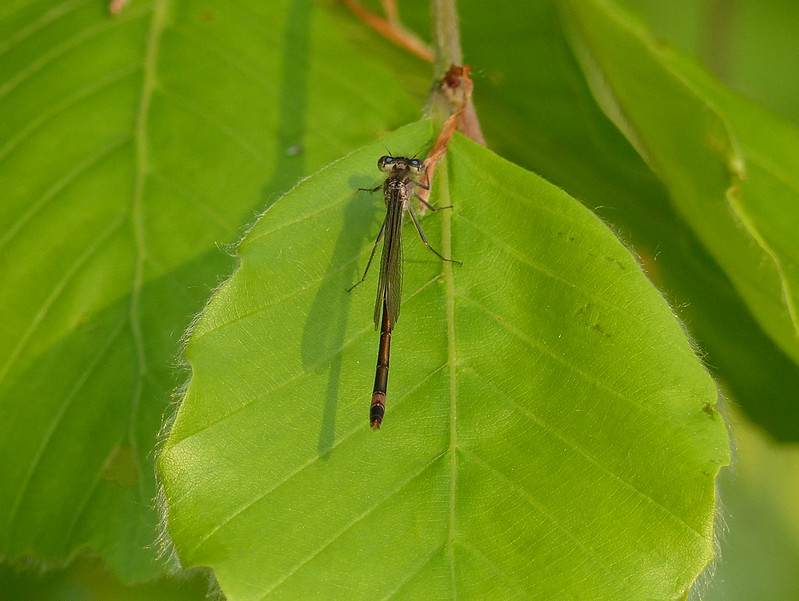
…has me stumped. It may be a teneral damselfly, that is, a recently emerged adult which doesn’t yet have its adult colouration.
In Eaves Wood I’d seen many Squirrels. It occurred to me that, although they are always about, there are times of the year, this being one of them, when Squirrels are more active and therefore more evident. I was also thinking about a Squirrels drey and the fact that, whilst in theory I know that Squirrels live in a nest made of sticks, I”d never actually seen one before.
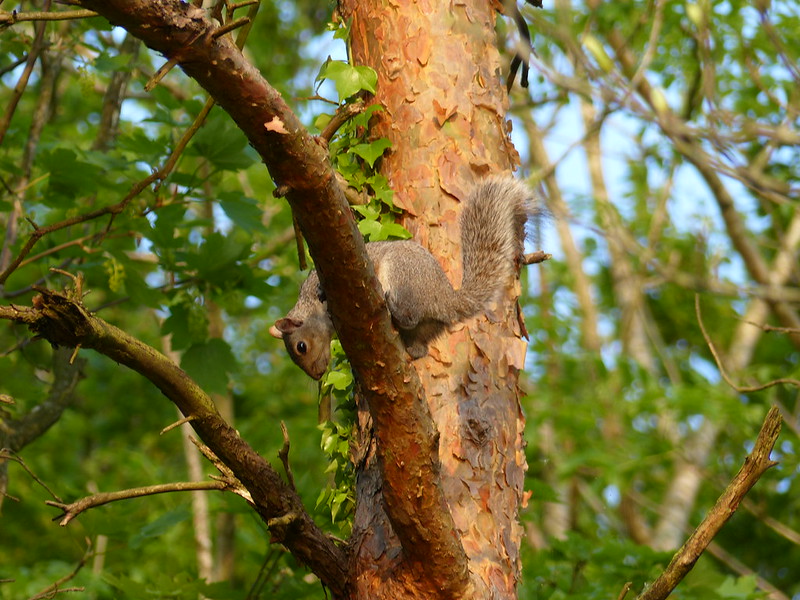
Ironic then, that when I watched this Squirrel, it climbed up a Scots Pine to…

…a drey!
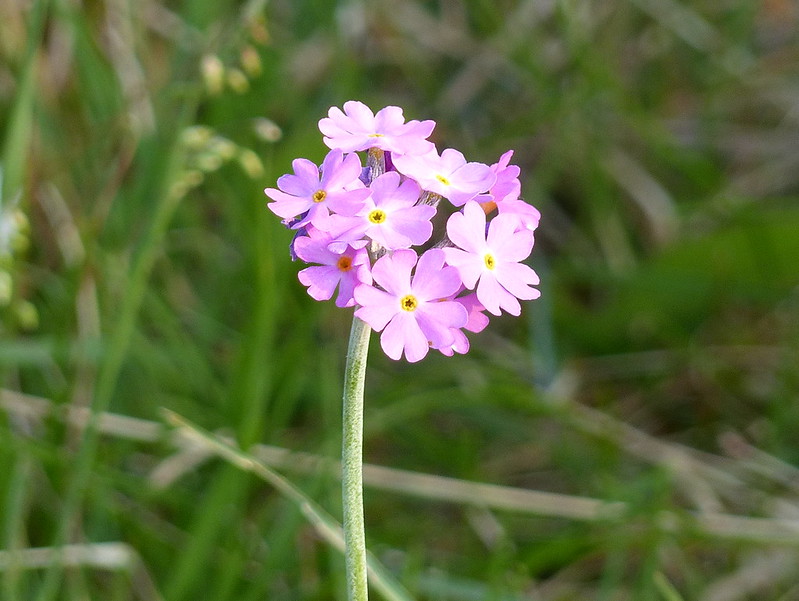
Bird’s-eye Primrose.
I was intrigued by a loud tearing sound in the reeds at the edge of the lake and went to investigate the cause. I was very surprised to find that the culprit was this little Blue Tit…
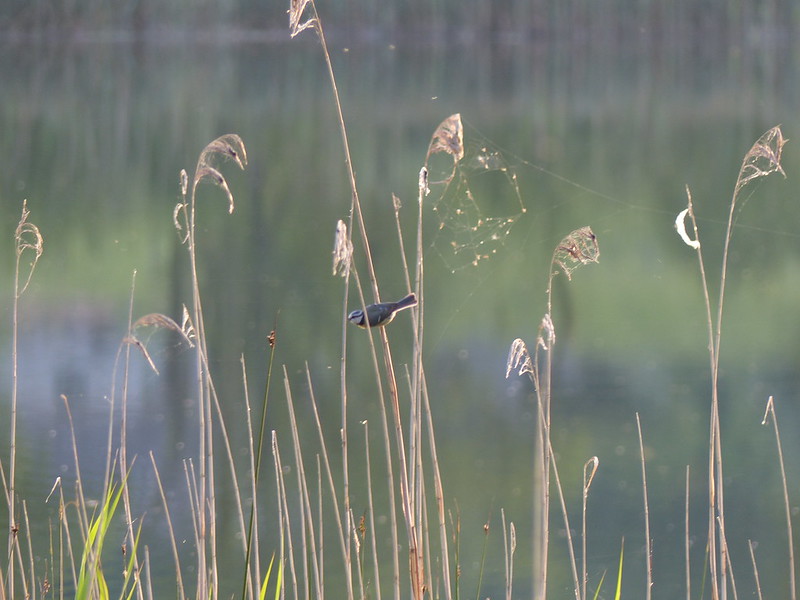

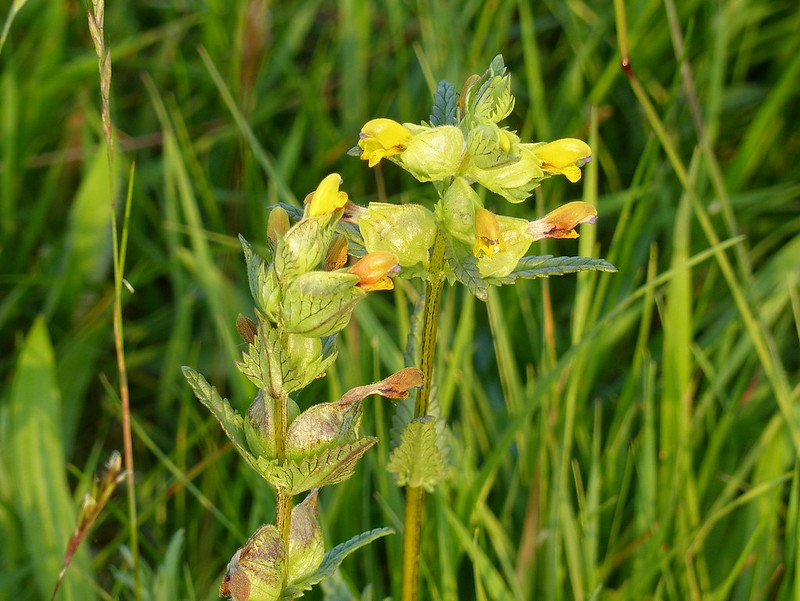
Yellow Rattle.
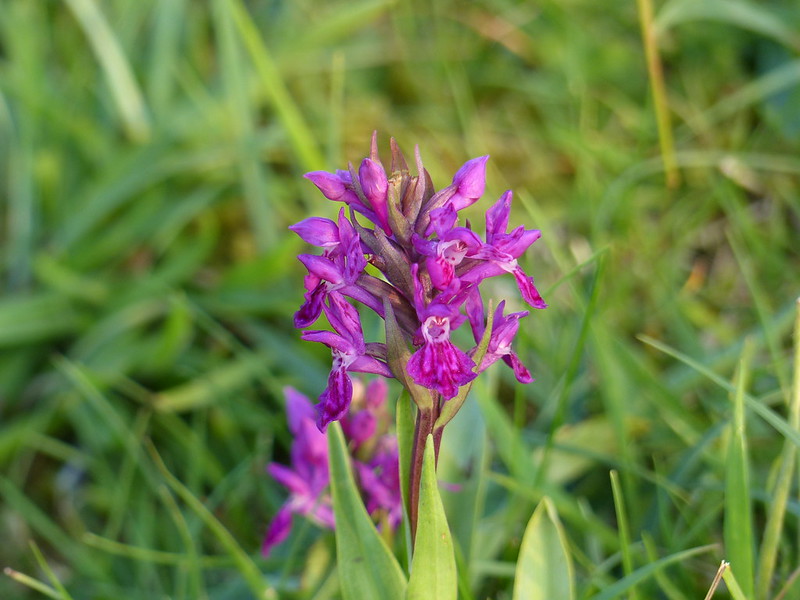
Because I find Orchids very difficult to identify, but also absolutely fascinating, I’ve long wanted a field guide dedicated solely to them. Usually, if I wait long enough, the Oxfam bookshop in Lancaster will fulfil my needs and this winter that’s exactly what happened. So I am now the proud owner of ‘A Guide to the Wild Orchids of Great Britain and Ireland’ by David Lang and have become an expert.
‘Yeah right’, as A would say. This looks to me very, very like Northern Marsh Orchid, especially the majaliformis sub-species. Except, this was growing in a relatively well-drained meadow, not a marsh, and the sub-species is only found within 100 metres of the coast, and this meadow is a little further than that from the Bay.
As is often the case, I didn’t have an exact route in mind; I’d thought of going to take another gander at the Lady’s-slipper Orchids, but chose instead to take another path through Gait Barrows – one that I knew would take me past several patches of…

…Lily-of-the-Valley.

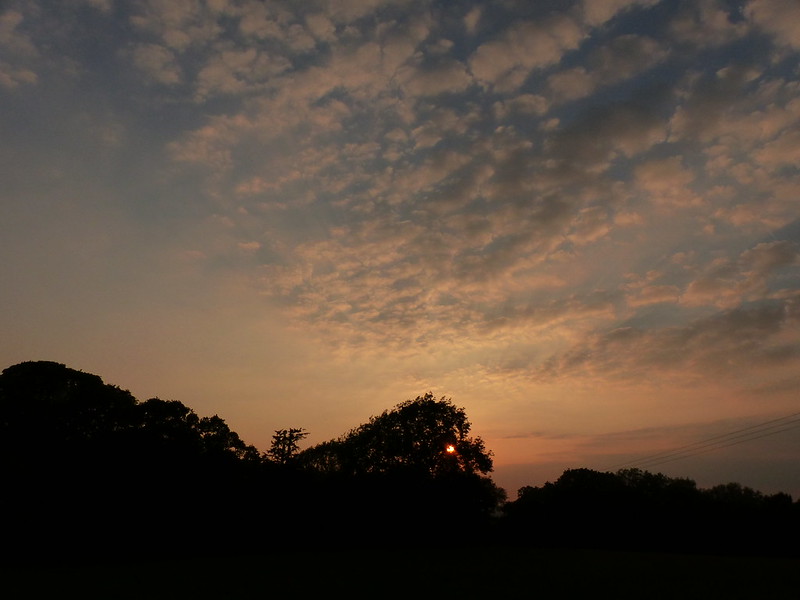
It was getting late, but rather than doubling-back towards home, I took the track out of the nature reserve onto the road, without really knowing where I would go next. When I reached the road, I noticed a small notice attached to a gate almost opposite. It said something like “Welcome to Coldwell Meadows AONB Nature Reserve”. I decided to investigate.
Good choice! In the meadow, no doubt tempted by the lush, un-grazed grass, were a small herd of Fallow Deer…

These are not a native species, and whilst I have seen feral deer in this area before, the last time I did so was quite a few years ago. I assume that these are more escapees, perhaps from the Deer park at Dallam?
I also saw a Marsh Harrier, and managed to get a photo, but not a very good one.
At the far side of the field from the road a small, and very tempting, gate gave on to woods. I thought I could guess where it would take me, and I was right: a short downhill stroll brought me to the ruined chimney of Coldwell Limeworks and from there it’s only a few strides to the footpath which runs along the edge of Silverdale Moss.
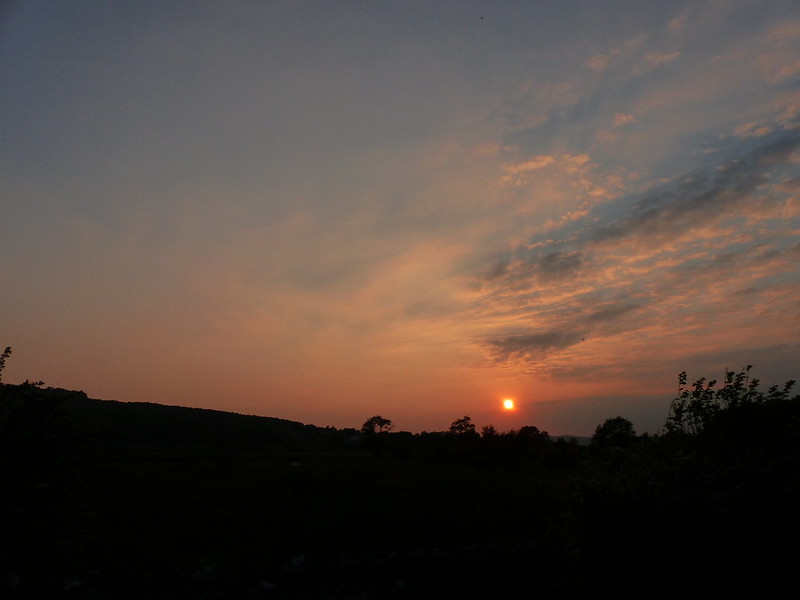
I was gazing into the distant views of the setting sun and the meres of the Moss, when a crashing sound in the hedgerow focused my attention closer to hand. I couldn’t see anything in the hedge, but there in the long grass, just over the drystone wall….
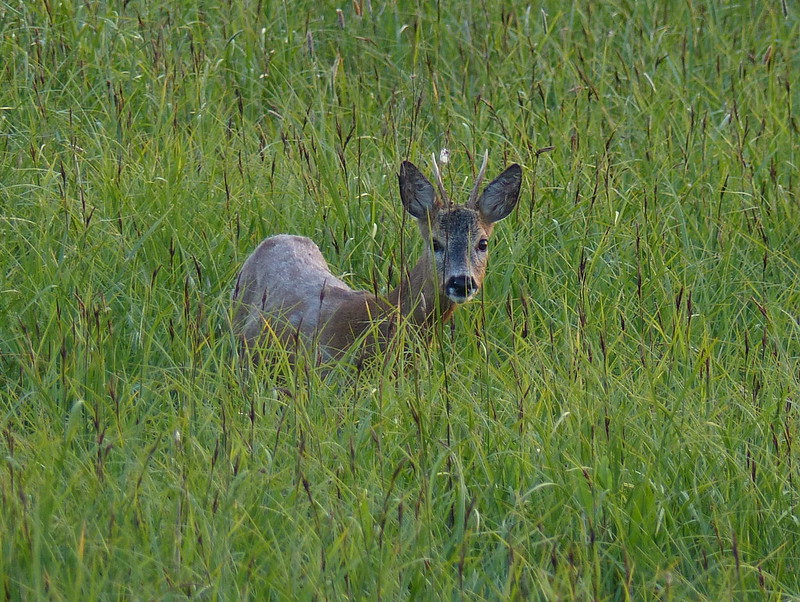
…a Roe Deer Buck. He watched me closely for a while, then barked in the eerie way they do, and bounded around the corner – the long vegetation seemingly necessitating a gait more like that of a bouncing gazelle than what I would normally associate with our own Deer.
After he’d rounded a corner and disappeared, another bark surprised me, and then a Doe, or at least, I think it was a Doe, jumped out of the grass, where she had been completely hidden, and also leapt away.
I waited a moment: there were still rustlings in the hedge. Sure enough, a third Deer appeared, quite a bit smaller than the other two…

…but this one didn’t run away. Retreating rather in small stages, anxiously keeping an eye on me all the while and not really seeming to know quite what to do.
A bit of a puzzle this little group. I don’t think Roe Deer live in family groups and Roe Deer Kids are usually born between mid-May and mid-June, so the third Deer probably wasn’t new-born. But, on the other had, Bucks are territorial in the summer, with the rut running from mid-July to the end of August.
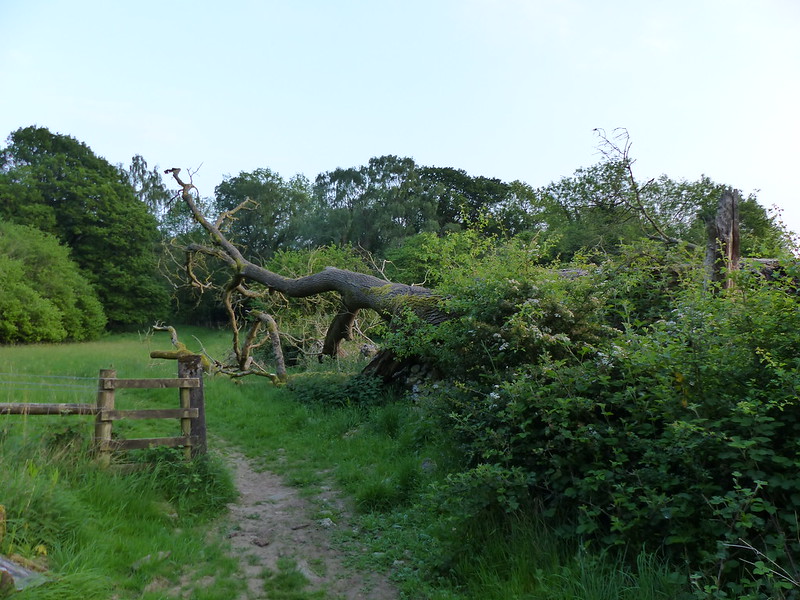
The former Cloven Ash.
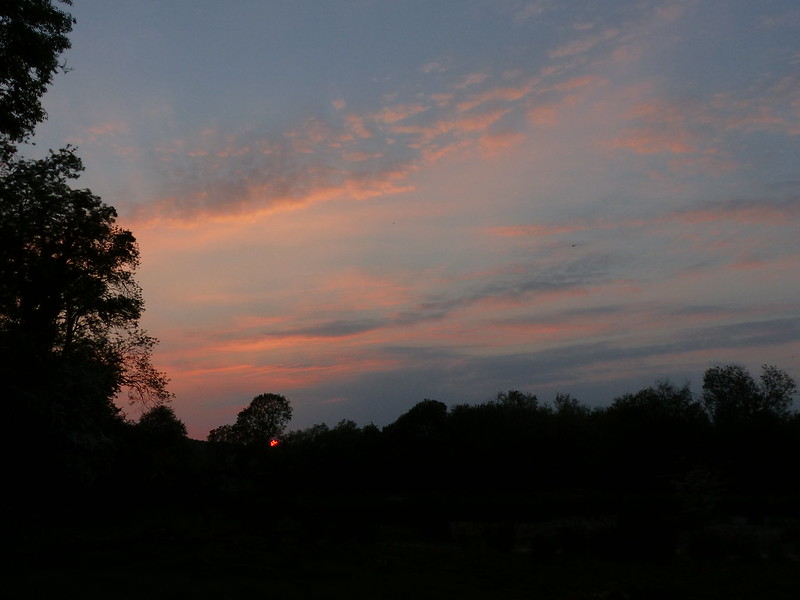
With the light now very low, this might I suppose, have been enough excitement for one night, but back in Eaves Wood for the final leg of the walk, two different raptors slalomed impressively through the trees. One was a Buzzard…

…the other, wasn’t a Buzzard, but apart from that I don’t really have any clue what it was. Very fast and very agile between the tightly-spaced tree-trunks, it will have to remain a mystery.
Ease-gill and Gragareth are both very fine, and will wait for another walk. This last minute replacement worked out pretty well!
‘You can’t always get what you want,
But if you try sometimes, well you just might find,
You get what you need.’

